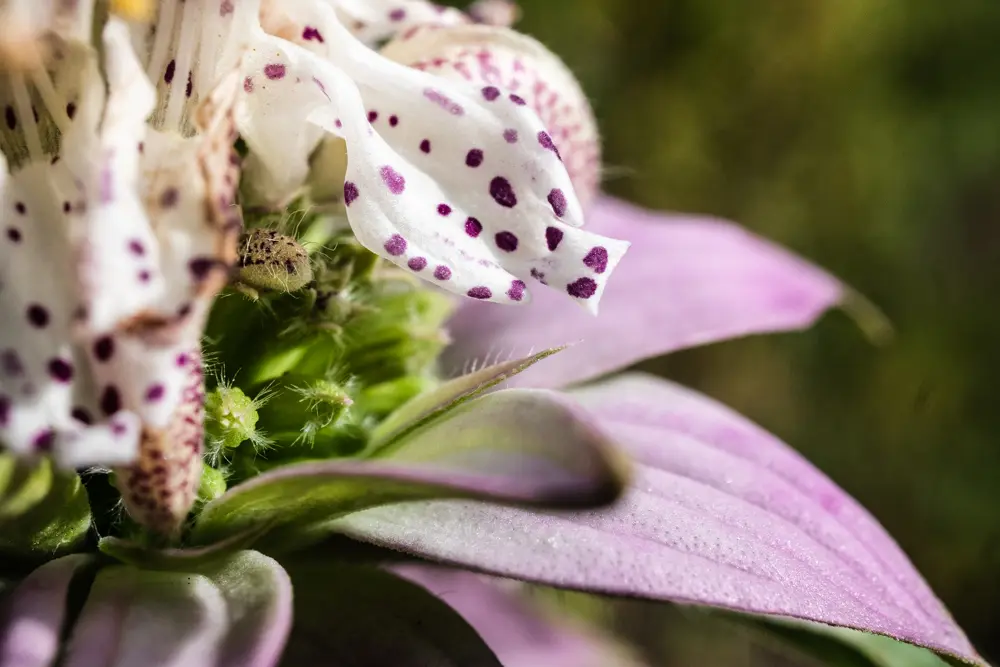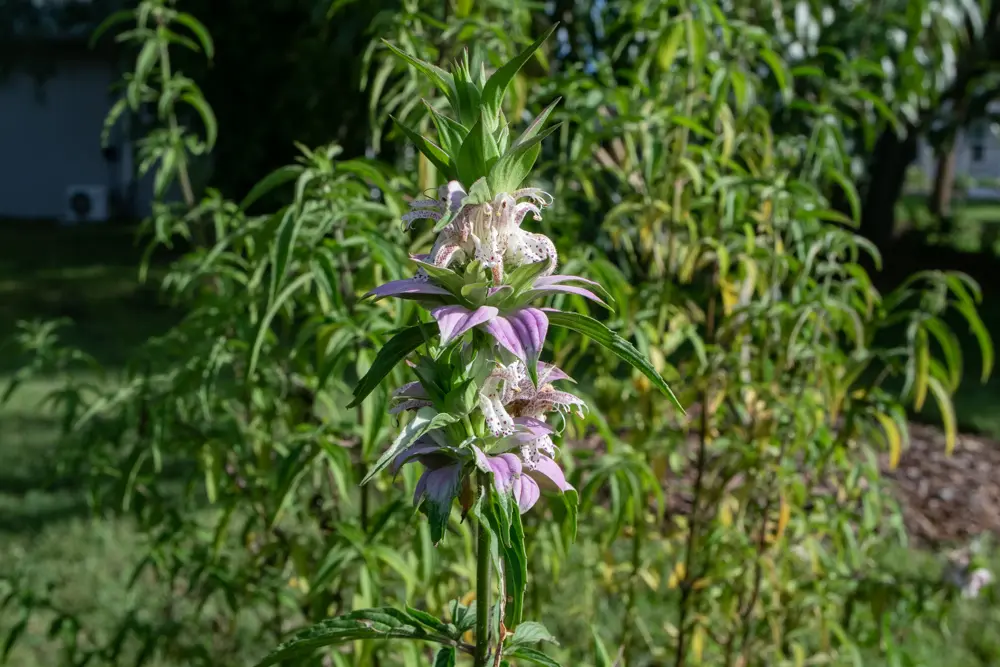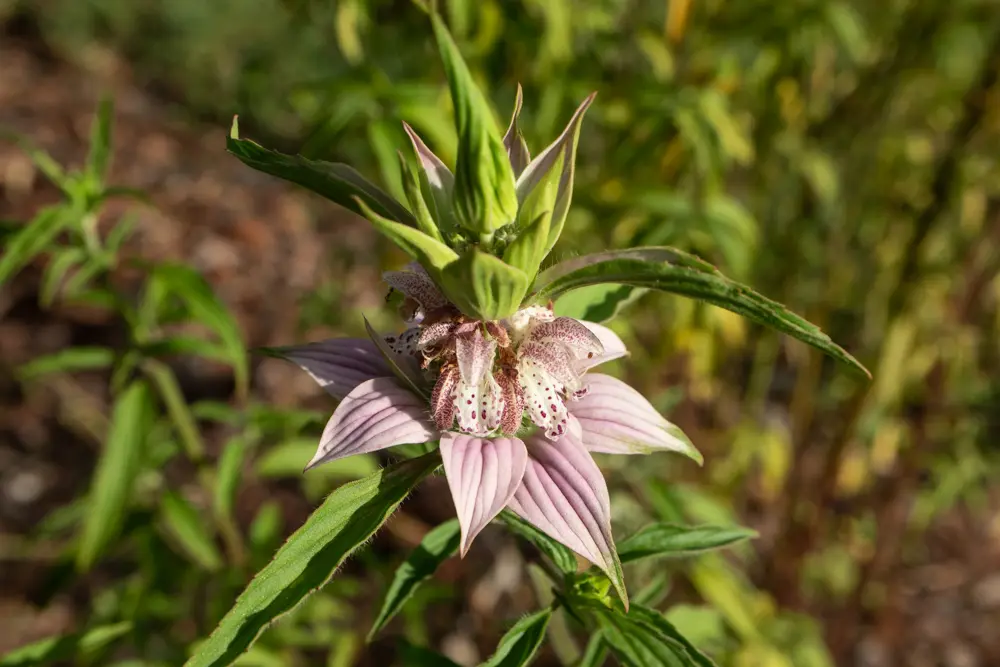by Amanda Rose Newton
Our month-long celebration of all plants Florida natives continues with my personal favorite (how have we not talked about this one already?) Dotted Horsemint or bee balm. Both are appropriately humorous common names for one whimsical plant!

Punching Up the Landscape
Monarda punctata features showy purple polka-dotted bracts (specialized leaves) situated on top of stalks two to five feet in height. The actual flowers are tiny and white and are nestled gently above the lavender spotted bracts. This creates a kind of Dr. Seuss effect, making it perfect for a children’s garden or any area that needs a touch of whimsy.
Both common names above are used about equally, and both are apt descriptions. Bees really do love the balmy scent of Monarda, especially the bumblebee which is a match made in all-things-whimsical heaven.
Lamiaceae
A member of the enormous Lamiaceae family, Monarda is in fact a true mint and has the scent to go along with the characteristic square stems.

In fact, if you wanted to, you could easily swap dotted horsemint out for oregano and thyme, serving as an American rendition of herbs usually associated with Mediterranean regions.
Feel free to include this as part of your kitchen or herb garden to add a taste of Florida flair to a variety of dishes!
In addition to the cumbersome bumble bee, horsemint is a staple for hummingbirds, honeybees, native bees, beetles, and even moths. It will fit right into your growing pollinator garden or a front yard flower bed.
How to Plant
Given horsemint’s growth habit, it is best suited for informal areas where a suit and tie are not required. They do tend to get a little unruly in appearance and should be placed in a naturalized setting.

However, when planted in solitary, they make an exceptional focal point. A good trimming in the earlier summer will help keep this perennial looking bushy and well-kept, the way we would imagine it looking for a camera mandatory zoom call.
Horsemint growing conditions
Horsemint prefers moist soil but can withstand periods of dryness in just about any pH range.
Horsemint is naturally occurring in fields from Zone 9A-10A and may not perform well beachside as it’s not very salt tolerant. It does, however, combat salty wind as long as it is not directly hit with salt spray. Full sun gives the best production, so be sure not to tuck it away on the side of a house or lining a wooded area.

Once planted, dotted horsemint requires little care outside of occasional grooming and it readily reseeds. The seeds are easy to collect, making it a great present for pollinator-loving friends or perhaps those who could use a good healthy dose of whimsy.


